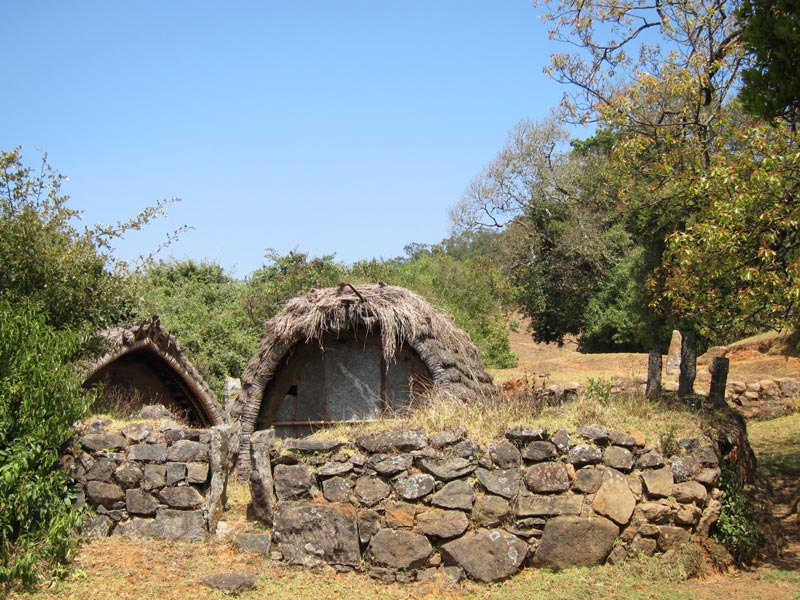
A visit to the Toda hamlet known as Taranadmund near Ooty makes it clear that for the Toda community, cultural heritage is part of everyday life and worship. The local economy continues to involve buffalo rearing.
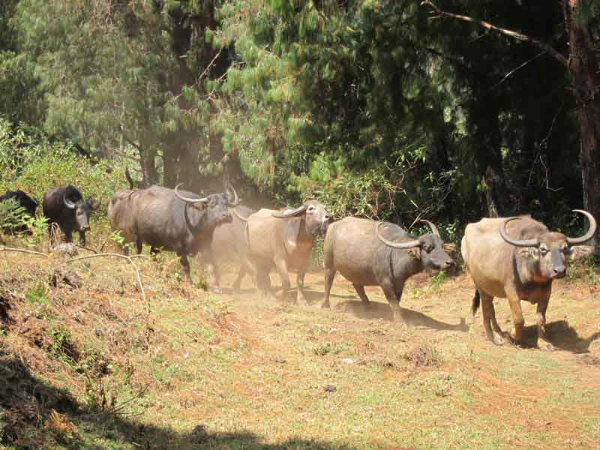
The breathtaking Nilgiris are home to a number of indigenous tribes, one of which is Toda. Unfortunately, the once thriving tribe has fewer than 1,000 members today. Based on the yardstick set by our modern education system, these tribesmen and women are considered illiterate and backward. However, one has to visit their homes, interact with them and see their craft to truly understand the depth of their knowledge, art, traditions and sensibilities.
The Toda tribe is largely dependent on buffalo herding and embroidery for its livelihood. Its members are incredibly skilled artisans known for the red-and-black embroidery on white fabrics that has even earned them a GI (geographical indication) tag. They live sustainable lives, in harmony with nature where all their resources are available. The Toda tribals have their own language, which does not have a script. Over the last century, their numbers have been dwindling. The sharp decline in their population is largely related to the decline in agriculture land, much of which has been lost of afforestation.
With their dwindling numbers, their art, craft and traditions are facing a slow death. If not preserved, the day is not far when their unique embroidery, for instance, is lost forever.
The Todas are an extremely closed community, barely connected to the rest of the world and, thus, deprived of the opportunities connectivity offers. They are not alone in leading marginalized and excluded lives. Overall, Scheduled Tribes account for 8.6% of India’s population, according to the 2011 Census.
Source: “Preserving our vanishing tribes, their heritage, language and wisdom” by Osama Manzar (Livemint, 8 September 2017)
URL: https://www.livemint.com/Opinion/AhrviHfdlAluJ6ffBBpUQN/Preserving-our-vanishing-tribes-their-heritage-language-an.html
Date Visited: 31 December 2021
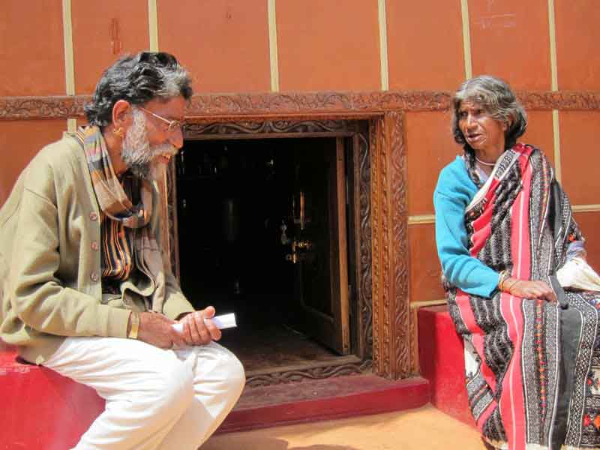
Photo © Ludwig Pesch
Learn more about the
Toda community, the Nilgiri Biosphere where the live, other elders,
the cultural identity communities have cherished for centuries, and this
in spite of the colonial legacy still affecting their members >>
As the Tamil Nadu State Government promotes Toda culture in the context of Indian and foreign tourism, a senior couple now inhabits a newly constructed traditional home facilitated by a grant. It features traditional materials and decorations such as the barrel shaped thatched roof and a low entrance door that also characterize nearby shrines. According to these Toda elders, the younger generation prefers the privacy and convenience afforded by the simple houses seen in the same hamlet just as elsewhere.
For parents belonging to the Toda and Kota communities scattered across the Nilgiri region, sending their children to the Thakkar Bapa Gurukulam is an option. It is named after Thakkar Bapa (Amritlal Vithaldas Thakkar 1869–1951).
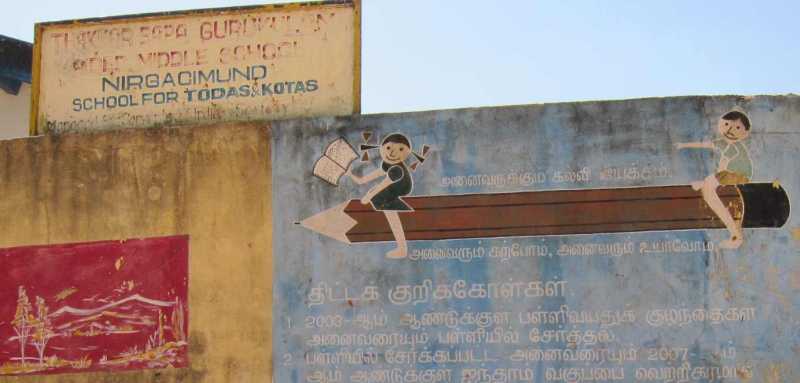
Learn more about Multi-lingual education & Assimilation >>
“Thakkar’s 1941 lecture advocated using tribal tongues as a ‘bridge’,
but in practice, even this did not happen.” | The Hindu, 13 February 2021 >>
In a 1941 lecture, he “highlighted negative stereotypes about tribal ‘laziness’, ‘promiscuity’, ‘illiteracy’, and ‘addiction to shifting cultivation’. The cultural racism in such stereotypes [misconceptions] forms the backdrop to the continuing discrimination and humiliation of Adivasis.” – Felix Padel & Malvika Gupta (“Are mega residential schools wiping out India’s Adivasi culture?”, The Hindu, 13 February 2021)
A social worker working for the upliftment of tribal people, he became a member of the Servants of India Society founded by Gopal Krishna Gokhale in 1914; and later the general secretary of the Harijan Sevak Sangh founded by Mahatma Gandhi. On his initiative, the Bharatiya Adimjati Sevak Sangh, a National Level Voluntary Organization, was constituted 1948. With grants by the Government of India, it manages Women & Child Development programmes, schools, and hostels. (See also Wikipedia entry “Thakkar Bapa“)
Bharatiya Adimjati Sevak Sangrahalaya museum inspired by Mahatma Gandhi >>
Unlike Jawaharlal Nehru (who oppposed a sudden break with the tribals past), Thakkar Baba was in favour of assimilation by way of “bringing tribes into the Hindu fold”:
Till the mid twentieth century there were, broadly, two approaches to the question of how to conduct elections that would imply sending representatives to assemblies and councils and thereby giving all Indians franchise. Tewari writes that whereas the nationalist view wanted to bring the largely tribal areas into elected legislative bodies, this was “bitterly opposed by the ‘official block’ sympathetic to the aboriginal communities. … the scholar-administrator viewed the tribal problem as an administrative one while the nationalists saw it as a legislative problem. The dialectical clash of these two camps generated an intense discourse which had far-reaching ramifications for the future of tribal communities inhabiting the Indian subcontinent.” There were stances on tribal representation from figures on various ends on this prism, including those of JH Hutton, who advocated protectionism; AV Thakkar, a Gandhian nationalist and the one-time head of of the Harijan Sevak Sangh, who advocated for bringing tribes into the Hindu fold; and BR Ambedkar, who was in the block ostensibly sympathetic to the tribal communities.
Source: “Uncivilising the Mind: How anthropology shaped the discourse on tribes in India” by Richard Kamei (doctoral candidate at the Tata Institute of Social Sciences in Mumbai (Caravan Magazine, 1 March 2021)
URL: https://caravanmagazine.in/books/anthropologists-tribes-india
Date visited: 29 April 2021
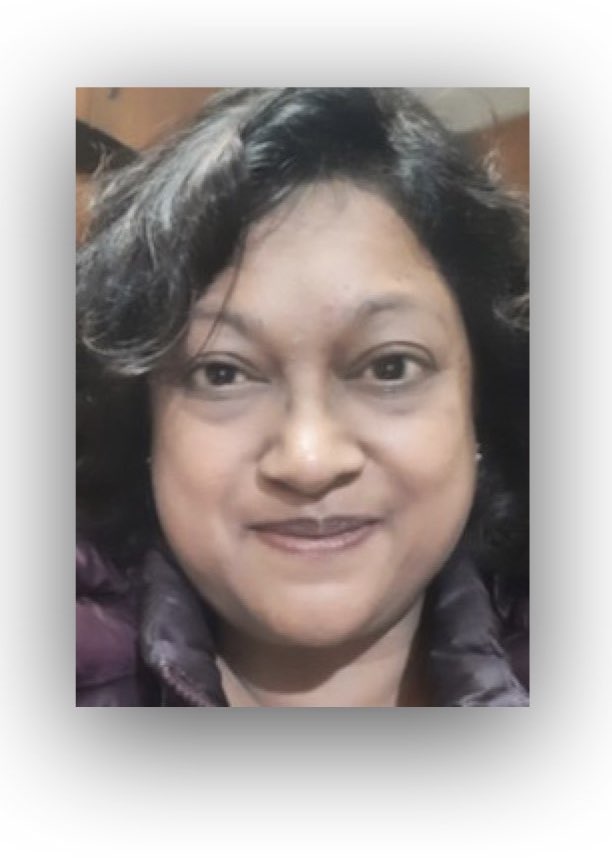
Dr. Ivy Hansdak clarifies that during the early twentieth century, “two main streams within Indian anthropology influenced the literary and visual representations of tribes by mainstream writers, artists and film-makers. One group was led by GS Ghurye (the assimilationist position) and the other by Verrier Elwin (the isolationist position). Later, Elwin shifted to the intergrationist position. According to the former, tribes were seen as ‘backward Hindus’ and an attempt was made to assimilate them into the Hindu fold. The identity of tribals as ‘vanavasi‘ comes from this position. Elwin, on the other hand, wanted to preserve their distinctive culture and often glorified them as the Noble Savage. Elwin’s views influenced Pandit Nehru’s tribal policy. Today, most tribals are being clubbed together with the scheduled castes (SC or dalit) with whom they share reservation in college admission and jobs. In the government documents, ‘SC/ST‘ are usually written together. The certificate that is issued to those claiming reserved status is also called ‘caste certificate’.” (email dated 26 April 2023)
“Casteism [*] is the investment in keeping the hierarchy as it is in order to maintain your own ranking, advantage, privilege, or to elevate yourself above others or keep others beneath you.” – Book review quoting Caste: The Origins of Our Discontents by Isabel Wilkerson
“Two prominent figures who have significantly contributed to this discourse are Mahatma Gandhi, Father of the Nation, and Bhimrao Ramji Ambedkar, Father of the Constitution. The two stalwarts of Indian politics, while revered equally by the public, had contrasting views on the caste system. […] And yet, despite their differences, they developed an understanding to work for the betterment of the marginalised.” – Rishabh Sharma in “How Ambedkar and Gandhi’s contrasting views paved way for caste reservation” (India Today, 6 October 2023) | Learn more >>
“I would like to direct attention to the general approach when we encounter the ‘other’ – the question of our protocol, etiquette and attitude. In our eagerness to know we probably show a disregard to these civilities. We try to buy friendship for building up rapport; we try to intrude into others’ territory without being invited and carry presents that we perceive would be appreciated to assert our friendliness.” – Anthropologist R.K. Bhattacharya in “The Holistic Approach to Anthropology” >>
Find up-to-date information provided by, for and about Indian authors, researchers, officials, and educators
List of web portals covered by the present Custom search engine
Ashoka Trust for Research in Ecology and the Environment (ATREE) – www.atree.org
Freedom United – www.freedomunited.org
Government of India (all websites ending on “.gov.in”)
Kalpavriksh Environmental Action Group – https://kalpavriksh.org
Shodhganga (a reservoir of Indian theses) – https://shodhganga.inflibnet.ac.in
Survival International – www.survivalinternational.org
UCLA Digital Library – https://digital.library.ucla.edu
Unesco – https://en.unesco.org
Unesco digital library – https://unesdoc.unesco.org
Unicef – www.unicef.org
United Nations – www.un.org/en
Video Volunteers – www.videovolunteers.org
WorldCat (“the world’s largest library catalog, helping you find library materials online”) – https://worldcat.org
To search Indian periodicals, magazines, web portals and other sources safely, click here. To find publishing details for Shodhganga’s PhD search results, click here >>
Search tips
Combine the name of any particular state, language or region with that of any tribal (Adivasi) community.
Add keywords of special interest (music, poetry, dance just as health, sacred grove and biodiversity); learn about the rights of Scheduled Tribes such as the “Forest Rights Act” (FRA); and the United Nations “Declaration on the Rights of Indigenous Peoples”, “Universal Declaration of Human Rights”, “women’s rights”, or “children’s right to education”.
Ask a question that includes “tribal” or “Adivasi”, for instance: “Adivasi way of life better?” (or “tribal way of life worse?”)
Specify any particular issue or news item (biodiversity, bonded labour and human trafficking, climate change, ecology, economic development, ethnobotany, ethnomedicine, global warming, hunter-gatherers in a particular region or state, prevention of rural poverty, water access).
For official figures include “scheduled tribe ST” along with a union state or region: e.g. “Chhattisgarh ST community”, “Himalayan tribe”, “Scheduled tribe Tamil Nadu census”, “ST Kerala census”, “Particularly Vulnerable Tribal Group Jharkhand”, “PVTG Rajasthan”, “Adivasi ST Kerala”, “Adibasi ST West Bengal” etc.
In case the Google Custom Search window is not displayed here try the following: (1) toggle between “Reader” and regular viewing; (2) in your browser’s Security settings select “Enable JavaScript” | More tips >>
Note: hyperlinks and quotes are meant for fact-checking and information purposes only | Disclaimer >>
Some clarifications on caste-related issues by reputed scholars >>
Tips for using interactive maps
Toggle to normal view (from reader view) should the interactive map not be displayed by your tablet, smartphone or pc browser
For details and hyperlinks click on the rectangular button (left on the map’s header)
Scroll and click on one of the markers for information of special interest
Explore India’s tribal cultural heritage with the help of another interactive map >>
Tip: click on any red marker for details on endangered languages in a particular region of India.
Please note: the facts and figures cited (via hyperlinks) links call for updates and fact checking >>
Cultural invisibility – India’s 600 potentially endangered languages | Linguistic Survey of India (official website) >>